#Joey LaMotta
Text

Back in the 1960’s, Frank Vincent was a skilled drums, piano and trumpet player. Originally aspiring to a career in music, he had his own jazz band; in 1969, he needed a piano player but somehow he ended up hiring another Jersey Boy to play guitar: Joe Pesci.
Pesci was also trying out a music career: he had just released his debut album (billed as Joe Ritchie), on which he sang covers of contemporary pop hits.
As the popularity of lounge music waned, Vincent and Pesci turned to stand-up comedy, performing as "Vincent and Pesci" from 1970 to 1976, and developing a strong professional and personal friendship.
Almost incidentally, in 1976 they both landed parts in the low-budget gangster film "The Death Collector", but then they were back to their everyday life - Pesci was working at an Italian restaurant in New Jersey.
Four years later, Martin Scorsese was looking for the cast for his "Raging Bull" film: he was already famous for his search for unknown or otherwise novice actors.
Robert De Niro, who was already committed to play Jake LaMotta, began helping Scorsese with the search, and it was he who suggested Pesci for the role of Joey LaMotta - noticing him right in "The Death Collector".
Pesci, in turn, persuaded Frank Vincent to try for the role of Salvy Batts, and he also received the part.
And so, here they are, in 1980, on New York's 49th Street, during the filming of Raging Bull (Brian Hamill)
17 notes
·
View notes
Photo

“One-sheet poster for Raging Bull, 1980
Robert De Niro Papers
osf 58
De Niro was given a copy of the book Raging Bull, My Story by Jake La Motta (with Joseph Carter and Peter Savage) while he was in Italy working on The Godfather, Part II. De Niro found the story full of cinematic possibilities but could not persuade Scorsese to direct. De Niro began to develop the project himself.
In 1976 De Niro asked producers Robert Chartoff and Irwin Winkler - who had recently finished production on Rocky - to consider working with him on the project. Intrigued by the story and wanting to continue their creative collaboration with De Niro and Scorsese, the two agreed to produce. Scorsese, however, was focused on developing The Last Temptation of Christ, which Chartoff and Winkler had also agreed to produce, and again declined to direct.
In 1978, Scorsese collapsed from exhaustion during the Telluride Film Festival. De Niro's conversations with Scorsese during his recovery resulted in Scorsese's growing enthusiasm for Raging Bull. Winkler and Chartoff had been disappointed with previous versions of the screenplay but were encouraged by Paul Schrader's draft, which they felt was vastly improved but "cold." Winkler encouraged Scorsese and De Niro to write one themselves based on Schrader's work and LaMotta's book. After four weeks of intense work the two produced a draft that impressed everyone.
De Niro studied every detail about the character; did background research on boxing, watching countless bouts on videotape; and trained for months with Jake LaMotta himself. Scorsese cast Joe Pesci as Joey after seeing him in an independent film The Death Collector (1976), and Pesci in turn recommended Cathy Moriarty for the part of Jake's wife, Vicky.
Initial reviews of Raging Bull were mixed due to the brutality both in and outside the ring, but the film ultimately received eight Academy Award nominations. Thelma Schoonmaker won for editing and Robert De Niro for Best Actor. In 1990, the Library of Congress added Raging Bull to the National Film Registry for being "culturally, historically, and aesthetically significant.”
#robert de niro#robert de niro archives#robert de niro hrc#hrc archives#harry ransom center#ut austin#films#film history#posters
3 notes
·
View notes
Text
Raging Bull (US)
Trapped in a hospital bed, Martin Scorsese was at death’s door. After years of pushing his body through intense working hours, prescription drug abuse, and sacrilegious amounts of cocaine, the then-35-year-old suffered internal bleeding, boarding brain hemorrhaging. Years prior, Robert De Niro was handed Raging Bull, the memoir of one-time middleweight champion boxer Jake LaMotta. Notorious for letting opponents pulverize his body into a numb chunk of meat to the point of exhaustion, LaMotta drank heavily, beat his wives, and racked up a charge for allowing the prostitution of a 14-year-old girl at his club. By the release of his book, he was an out-of-shape entertainer with brain damage working rundown night clubs to feed himself, reciting Shakespeare and cracking Don Rickles-esque crowd work. Seeing Jake’s potential as a character, De Niro pitched the story to Marty.
Occupied by his promising follow-up to TAXI DRIVER (1976), Scorsese was deep into production planning for a nostalgic musical revue, NEW YORK, NEW YORK (1977), convinced he'd secure his spot as one of the great American directors. Navigating a turbulent marriage and an affair with his lead actor, Liza Minelli, there was no time for others’ passion projects; besides, he had no interest in a sports movie, with little exposure to boxing growing up. DeNiro would persist over the next few years. When the musical was a critical and financial disaster, Scorsese could not believe it, having given his all. Pushing closer to the edge, Marty had a revolving door of girlfriends and drug habits. In 1978, he was taken to the emergency room for coughing up blood and collapsed at 109 pounds. Watching the tubes keeping him alive coming in and out of his body, he saw how far he’d fallen from the son of two garment workers in Little Italy, a boy who had fallen under the influence of a charismatic priest and at one point considered becoming a seminarian. He recounts, “I prayed. But if I prayed, it was just to get through those 10 days and nights. I felt [if I was saved] it was for some reason. And even if it wasn’t for a reason, I had to make good use of it.’” He realized his self-destructive tendencies could bring anguish to anyone in his orbit, including those he loved, just like LaMotta. Finally, the director was ready. De Niro and Scorsese began putting a draft together from LaMotta’s text, then they brought Paul Schrader to work on a draft. After Schrader handed in his work in under six weeks, Scorsese and DeNiro put their finishing touches on Schrader’s structure, adding their favorite scenes from the memoir. The studio’s first reaction was, “Why would you want to tell a story about a human cockroach?”
The preproduction research for both director and actor serves as a template for contemporary filmmakers and actors. De Niro’s preparation for the role inspired an entire generation of actors looking to commit their entire body, a standard that has become its own acting school. Scorsese and designers attended boxing matches, studied boxing photography books for composition, consulted LaMotta and his former trainers for accuracy, and home movies for the family’s interpersonal relationships. Having lost a fight, De Niro’s Jake mutters, “I’ve done a lot of bad things, Joey. Maybe it’s coming back to me.” After dancing with death, Scorsese worked on RAGING BULL as if it were the last film he’d ever make. Borrowing from the great masters, he weaves the most graceful brutality of the latter 20th century put to celluloid. Hitchcock’s PSYCHO (1960) shower sequence served as template for Jake’s annihilation on the robes, followed by a shot of Ray’s glove taken from Samuel Fuller’s THE STEEL HELMET (1951). One of the first boxing films of the sound era to place the camera inside the ring, director of photography Michael Chapman (TAXI DRIVER, THE LAST WALTZ and AMERICAN BOY) and Scorsese play with frame rates within takes, flying the camera through the action, and relishing in all they have at their disposal. To add an extra layer to the period piece, the production chose black and white film stock. The great Thelma Schoonmaker cut the film; this was her first feature as editor. Together with the director, she elevated the work to a vicious level of grit violence. Famously, when asked how such a nice lady could edit such violent films (for Scorsese), she replied, “Ah, but they aren’t violent until I’ve edited them.” In all its barbarity and beauty, the film gives a naked depiction of humanity. It delivers a vision as complex as its subject. To call RAGING BULL one of the greatest movies of the 1980s is a misnomer. The level of experimentation and personal filmmaking could only fit in the realm of 1970s New Hollywood. Along with THE KING OF COMEDY (1982), LaMotta’s story received a greenlight during a golden age of American cinema, only to release during the postmortem of United Artists and the cinematic wasteland of studios. Artists’ work is often cited as therapeutic. RAGING BULL offers a new light, proving that it can also be the first step towards repentance of sins. As the film is viewed for a 4K restoration, we should keep in mind how much the director has accomplished over the years. In the decades since the film’s release, Scorsese has continued to uplift new voices in cinema through the World Cinema Project and educate through the Film Foundation. The now-80-year-old director has made it clear his penance for his early years is permanent. (1980, 129 min, DCP Digital)
Ray Ebarb
0 notes
Text
Assistir Filme Touro Indomável Online fácil
Assistir Filme Touro Indomável Online Fácil é só aqui: https://filmesonlinefacil.com/filme/touro-indomavel/
Touro Indomável - Filmes Online Fácil
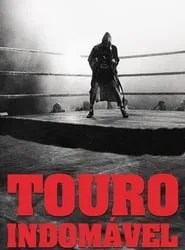
O pugilista peso-médio Jake LaMotta (Robert De Niro), chamado de "o touro do Bronx", sobe na carreira com a mesma rapidez com que sua vida particular se degrada, graças ao seu temperamento violento e possessivo. Todos ao seu redor são afetados por seu comportamento auto-destrutivo, como seu irmão e empresário Joey LaMotta (Joe Pesci) e sua esposa Vickie (Cathy Moriarty).
0 notes
Text
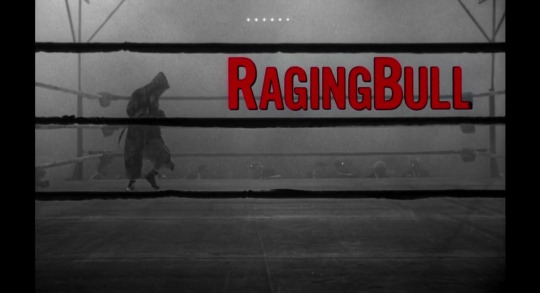
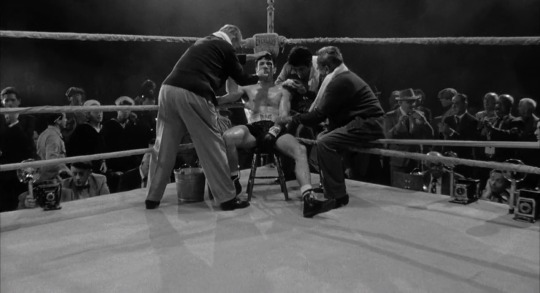
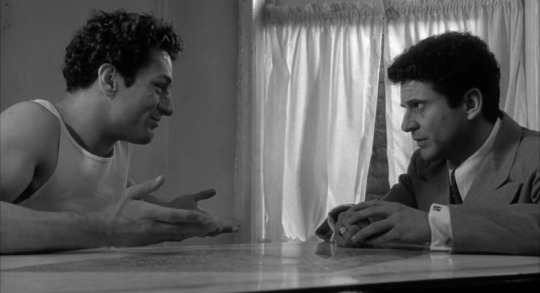


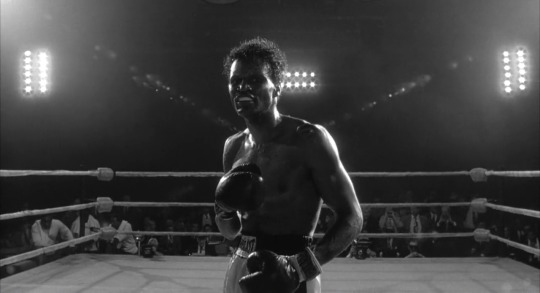



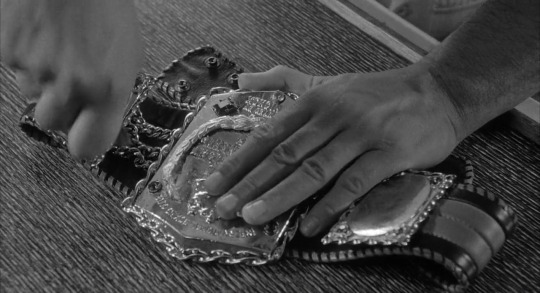
Raging Bull (1980)
Director - Martin Scorsese, Cinematography - Michael Chapman
"Why? Why'd you do it? Why? You're so stupid. You're so stupid. So fuckin' stupid. So stupid. They call me an animal. I'm not an animal! I'm not an animal. Why do they treat me like this? I'm not bad. I'm not that bad! I'm not that bad. I'm not that guy. I'm not that guy. I'm not that guy."
#scenesandscreens#Raging Bull#Martin Scorsese#Michael Chapman#Robert De Niro#Jake LaMotta#Kevin Mahon#Joe Pesci#Joey LaMotta#Cathy Moriarty#Nicholas Colasanto#Theresa Saldana#Frank Vincent#Lori Anne Flax#Charles Scorsese#Geraldine Smith#Candy Moore#Don Dunphy#McKenzie Westmore#Gene LeBell#John Turturro#Coley Wallace#Johnny Barnes#Bill Hanrahan#Eddie Mustafa Muhammad
161 notes
·
View notes
Photo




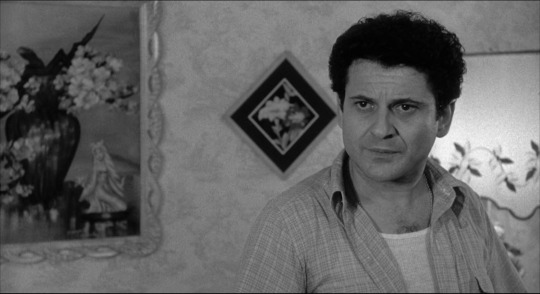
Joe Pesci as Joey LaMotta - Raging Bull (1980)
Golden Globe Award Nominee for Best Supporting Actor in a Motion Picture
25 notes
·
View notes
Photo

Joseph Frank Pesci was born on February 9, 1943. He is an American actor and musician. He is known for portraying tough, volatile characters in a variety of genres and for his collaborations with Robert De Niro and Martin Scorsese in the films Raging Bull (1980), Goodfellas (1990), Casino (1995), and The Irishman (2019). He also appeared in Once Upon a Time in America (1984), Moonwalker (1988), JFK (1991), A Bronx Tale (1993), and The Good Shepherd (2006). His comedy roles include such films as Home Alone (1990), My Cousin Vinny (1992), Home Alone 2: Lost in New York (1992), and the Lethal Weapon franchise (1989–1998).
Pesci won the Academy Award for Best Supporting Actor for his role as the psychopathic gangster Tommy DeVito in Goodfellas and received two other nominations in the same category for his portrayals of Joey LaMotta and Russell Bufalino in 1980's Raging Bull and in 2019's The Irishman, respectively.
He announced his retirement from acting in 1999, and has since appeared only occasionally in films.
He is also a musician who has recorded three studio albums, Little Joe Sure Can Sing! (1968), Vincent LaGuardia Gambini Sings Just for You (1998) and Pesci... Still Singing (2019).
Daily inspiration. Discover more photos at http://justforbooks.tumblr.com
17 notes
·
View notes
Photo

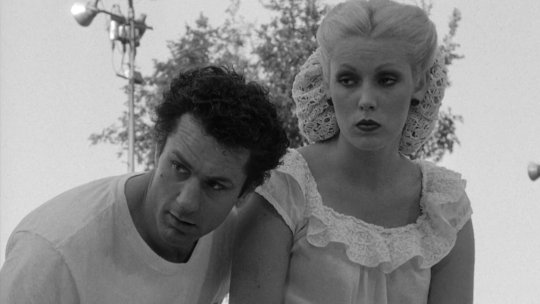
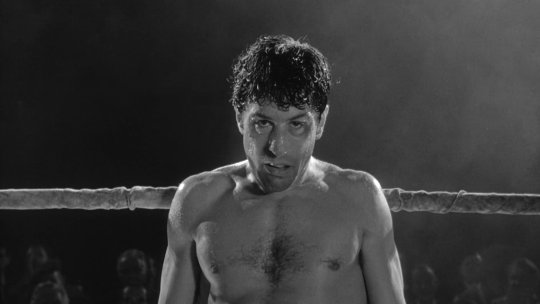





"You win, you win. You lose, you still win."
•Joey LaMotta
#movie#movie quotes#cinema#film#filmlerden alıntılar#filmlerden kareler#sinema#Martin Scorsese#joey pesci#robert de niro#michael chapman#raging bull
5 notes
·
View notes
Text
Raging Bull (1980), AFI #4



The second movie for the group on the AFI list was a Martin Scorsese masterpiece that features a stand out acting performance from Robert De Niro as boxer Jake LaMotta. It was filmed completely in black and white on mostly small sets so it was the acting and directing that really held up the film. The film only took home two Oscars in 1981 (best actor and best editing) despite being nominated in eight categories (Tess and Ordinary People were the big winners that year). This film is one of many examples some movie enthusiasts use when saying that the Oscars are somehow rigged since the big winners from 1981 are not on the AFI top 100 and this film is ranked fourth all time (rather strange since the voters for AFI and the voters for the Academy Awards have a strong overlap). No matter the recognition at the time, there are many aspects of this movie that are spectacular and make it worth seeking out today.
Raging Bull follows the history of Jake LaMotta (don’t look into the chronological accuracy because it is not there) over the time that he was married to his celebrity wife from the mid 40s to the late 50s. The first couple of times that I saw this movie, I assumed that it was the history of just LaMotta, but it actually only covers the time of his turbulent relationship with Vikki, his second wife. It is strange how much his jealousy of her is featured (he was 25 and married while she was 15 when they first met at a public pool) yet it doesn’t really feature what a lime light power couple they were for the time. What the movie does feature is how hard headed and unfeeling Jake LaMotta was both in and outside the ring.
De Niro plays the character as basically psychotic because the character fixates on something and has a very difficult time refocusing. The only people that seem to be able to get through to him are his little brother Joey (played as an Italian stereotype by Joe Pesci) and his wife at the time Vikki (played by Cathy Moriarty in her first Hollywood film role). I think that all three actors did a good job of showing what it is like dealing with a dangerous meal ticket, but it does bring up a question for me. I am not Italian nor have I been around a lot of Italian families, so I only know this demographic from movies and hearsay stereotypes. I have been to Italy and there was a lot of hand gesturing but no constant repetition of questions and answers like everyone was hard of hearing. Do Italian-American families repeat themselves constantly like they do in the movies? I assume that they don’t and this characteristic is acted hyperbolically for effect, but I could be wrong. I will have to take a night off from my introverted nature and see if I can sit in on an authentic Italian-American family dinner to see if it is anything like the movies. Perhaps I could better speak to the quality of the acting of Pesci and Moriarty if I was more familiar with the culture.
Considering the movie as a whole. I think that the breakdown scenes are what really stand out in the film for me. This man that almost wants to be hurt physically to feel anything cries twice during the film. Once because he threw a fight and knew he would be caught and a second time when he made the mistake of hiring an underage girl for his bar. Both times the lead tries to hurt himself physically because the inner turmoil is stronger pain than he understands so he tries to match it physically and is unable to do so. It is difficult to watch on some levels but I think that shows empathy from the viewer for this flawed character who is his own antagonist.
De Niro is famous for his commitment to this role in that he trained like a boxer from the 40s to get a boxing physique and then went to Europe and gained 60 lbs. in 4 months eating rich foods to play the part of LaMotta later in life. I think that getting into the mental headspace of somebody like LaMotta would be more difficult than copying his physical changes, so the commitment is effective but the visual is only briefly surprising. If that was the only thing that was noteworthy about the acting, then De Niro would not likely have received so much recognition.
There are a lot of boxing scenes in this movie that I honestly did not feel were that great. There was a lot of punches that obviously did not connect. I believe that Scorsese is known for his grit and is not afraid to show people at both their best and their worst. This was achieved far more with the scenes outside the ring. In fact, I would say that this movie is not a boxing movie at all, but more of an attempt to show a Neanderthal of a man try and make it in a world that confuses him. This man tries to use his strength to dominate and this works to an extent, but he is never truly going to understand others and his life is all the more difficult for his strength.
There are a couple of scenes that are almost painful to watch, but it seems like that is the intention. Same as with the previous movie, I watched this film once alone with headphones and once with a group. When watching in the group, I noticed that there was a lot of awkward talking in the room when LaMotta was doing his 2 minute stand up routine because it seemed so obvious that it wasn’t funny. De Niro did such a great job of playing through the awkwardness because somebody like LaMotta wouldn’t be good at reading a room and no amount of toughness would help that. If watching a person stumble through awkward social situations is hard to watch for you, then there are going to be many difficult scenes in this movie.
While writing this review, I was reminded that Joe Pesci and Cathy Moriarty were nominated for best supporting actor and actress respectively. I agree that they did exactly what the were nominated for: supporting the lead actor. They both played their parts well and accurately portrayed people who dealt with the very unlikable and unpredictable lead and often paid the price, but De Niro shined so brightly that I only saw them as support. They did a great job, but I believe this was only because they got to play off of De Niro. That open to debate, though, because I have never acted next to a strong lead nor did I see the performances of the competition that won the Academy Award from that year so I am not an authority on how deserving Pesci and Moriarty were.
A final note (no pun intended) is the sound aspect of this movie. There is not really a lot of music in the score, but the song that played at the beginning and end is still in my head. You can give it a listen here: https://www.youtube.com/watch?v=bw28pFbxg44 if you like swelling string sections with a touch of brass. The sound quality was great overall which was strange because it turned into the one true criticism I have of the movie that isn’t just a matter of personal taste. The punches in the boxing scenes were obviously pulled but the sound effects for the hits landing were amazing. Try playing the movie without sound and it looks like a WWE style fight with some hits but blatantly missed punches and if you listen to the sound with your eyes closed it sounds like a murderous beatdown to the point of being vomit inducing. The sound actually makes the lack of contact in the boxing scenes all the more obvious and that took me out of the movie a couple of times. I would actually suggest not watching with quality headphones because the mismatch is somewhat laughable. It is overall slight, but I wouldn’t want a small thing affect the overall experience of such a great movie.
Raging Bull is a great movie and a real master work of directing from Scorsese and acting from Robert De Niro. The acting is so strong that the viewer can empathize with this monster of a man who could not feel empathy himself. The viewer can also relate to the awkwardness of all the people around this animal who wanted what he had while simultaneously trying to avoid his unpredictable wrath. I am not sure I would have ranked this film #4 on the list of all time great American movies, but it would be in my top ten acting performances. This film is definitely worth watching and I would definitely recommend it to others. I might caution those that are squeamish about violence, but it is worth it for the overall experience. Great film.
#Raging Bull#AFI films#actors#movies#films#introvert#extrovert#Robert De Niro#Martin Scorsese#joe pesci#film critic#Film Review#American movies#1980s movies#watching movies#sound effects#sports#boxing#psychology#awkward#weight gain#champion
18 notes
·
View notes
Photo
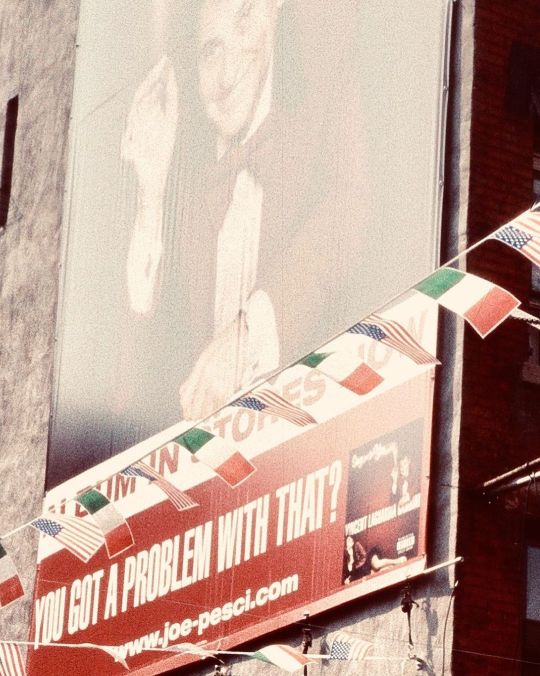
Joe Pesci, Little Italy, New York 1999 Joe Pesci won the Academy Award for Best Supporting Actor for his role as the psychopathic gangster character Tommy DeVito in Goodfellas and received two other nominations in the same category for his portrayals of Joey LaMotta and Russell Bufalino in 1980's Raging Bull and in 2019's The Irishman, respectively. He announced his retirement from acting in 1999, but has appeared in three films since then. He is also a musician who has recorded three studio albums, Little Joe Sure Can Sing! (1968), Vincent LaGuardia Gambini Sings Just for You (1998) and Pesci... Still Singing (2019). Buy Artwork: Society6.com/remofella Photography © Copyright by @remofella #remofella #cafe #chacha #pizza #garden #roman #azzurri #pasta #little #italy #littleitaly #joepesci #NewYork #empirestatebuilding #manhattan #bigapple #skyscraper #nyc #buildings #artmuseum #america #guggenheim #urban #photography #streetphotography #vintagephotography #blackandwhite #blackandwhitephotography #artphotography #analogfilm (hier: New York City, N.Y.) https://www.instagram.com/p/Cabbh9pK_M2/?utm_medium=tumblr
#remofella#cafe#chacha#pizza#garden#roman#azzurri#pasta#little#italy#littleitaly#joepesci#newyork#empirestatebuilding#manhattan#bigapple#skyscraper#nyc#buildings#artmuseum#america#guggenheim#urban#photography#streetphotography#vintagephotography#blackandwhite#blackandwhitephotography#artphotography#analogfilm
0 notes
Text
Ezzard Charles


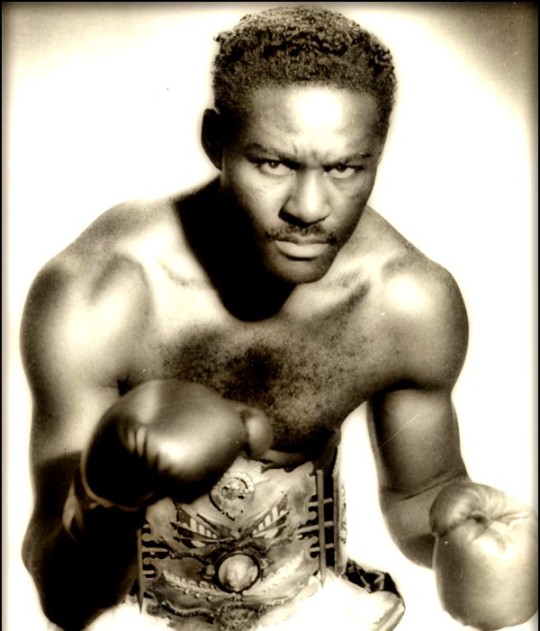




Ezzard Mack Charles (July 7, 1921 – May 28, 1975) was an American professional boxer and former World Heavyweight Champion.
Charles defeated numerous Hall of Fame fighters in three different weight classes. He retired with a record of 93 wins, 25 losses and 1 draw.
Career
He was born in Lawrenceville, Georgia, but is commonly thought of as a Cincinnatian. Charles graduated from Woodward High School in Cincinnati where he was already becoming a well-known fighter. Known as "The Cincinnati Cobra", Charles fought many notable opponents in both the light heavyweight and heavyweight divisions, eventually winning the World Championship in the latter. Although he never won the Light Heavyweight title, The Ring has rated him as the greatest light heavyweight of all time.
Career beginnings and military service
Charles started his career as a featherweight in the amateurs, where he had a record of 42–0. In 1938, he won the Diamond Belt Middleweight Championship. He followed this up in 1939 by winning the Chicago Golden Gloves tournament of champions. He won the national AAU Middleweight Championship in 1939. He turned pro in 1940, knocking out Melody Johnson in the 4th round. Charles won all of his first 15 fights before being defeated by veteran Ken Overlin. Victories over future Hall of Famers Teddy Yarosz and the much avoided Charley Burley had started to solidify Charles as a top contender in the middleweight division. However, he served in the U.S. military during World War II and was unable to fight professionally in 1945.
World heavyweight champion
He returned to boxing after the war as a light heavyweight, picking up many notable wins over leading light heavyweights, as well as heavyweight contenders Archie Moore, Jimmy Bivins, Lloyd Marshall and Elmer Ray. Shortly after his knock-out of Moore in their third and final meeting, tragedy struck. Charles fought a young contender named Sam Baroudi, knocking him out in Round 10. Baroudi died of the injuries he sustained in this bout. Charles was so devastated he almost gave up fighting. Charles was unable to secure a title shot at light heavyweight and moved up to heavyweight. After knocking out Joe Baksi and Johnny Haynes, Charles won the vacant National Boxing Association Heavyweight title when he outpointed Jersey Joe Walcott over 15 rounds on June 22, 1949. The following year, he outpointed his idol and former World Heavyweight Champion Joe Louis to become the recognized Lineal Champion. Successful defenses against Walcott, Lee Oma and Joey Maxim would follow.
Charles vs. Marciano
In 1951, Charles fought Walcott a third time and lost the title by knockout in the seventh round. Charles lost a controversial decision in their fourth and final bout. If Charles had won this fight, he would have become the first man in history to regain the heavyweight championship. Remaining a top contender with wins over Rex Layne, Tommy Harrison and Coley Wallace, Charles knocked out Bob Satterfield in an eliminator bout for the right to challenge Heavyweight Champion Rocky Marciano. His two stirring battles with Marciano are regarded as ring classics. In the first bout, held in June 1954, he valiantly took Marciano the distance, going down on points in a vintage heavyweight bout. Charles is the only man ever to last the full 15-round distance against Marciano. A number of fans and boxing writers felt that Charles deserved the decision. In their September rematch, Charles landed a severe blow that literally split Marciano's nose in half. Marciano's cornermen were unable to stop the bleeding and the referee almost halted the contest until Marciano rallied with an 8th-round knockout.
Later career
Financial problems forced Charles to continue fighting, losing 13 of his final 23 fights (He held a record of 83 wins, 12 losses and 1 draws before financial problems became a factor in his career). He retired with a record of 93-25-1 (52 KOs).
Charles was also a respected double bass player who played with some of the jazz greats in the 1940s and 1950s at such notable places as Birdland (jazz composer George Russell wrote the famous tune "Ezz-Thetic" in his honor). He was very close with Rocky Marciano and a neighbor and friend of Muhammad Ali when they both lived on 85th Street in Chicago. Charles also starred in one motion picture: Mau Mau Drums, an independent (and unreleased) jungle-adventure film shot in and around Cincinnati in 1960 by filmmaker Earl Schwieterman.
Death
In 1968, Charles was diagnosed with amyotrophic lateral sclerosis, also known as Lou Gehrig's disease. The disease affected Charles' legs and eventually left him completely disabled. A fund raiser was held to assist Charles and many of his former opponents spoke on his behalf. Rocky Marciano in particular called Charles the bravest man he ever fought. The former boxer spent his last days in a nursing home. A chilling 1973 commercial showed Charles in his wheelchair horribly disabled by the disease. Charles died on May 28, 1975, in Chicago.
Legacy
In 1976, Cincinnati honored Charles by changing the name of Lincoln Park Drive to Ezzard Charles Drive. This was the street of his residence during the height of his career.
He was elected to the International Boxing Hall of Fame in 1990.
In 2002, Charles was ranked #13 on The Ring magazine's list of the 80 Best Fighters of the Last 80 Years.
In 2006, Ezzard Charles was named the 11th greatest fighter of all time by the IBRO (International Boxing Research Organisation).
The "Cincinnati Cobra" was a master boxer of extraordinary skill and ability. He had speed, agility, fast hands and excellent footwork. Charles possessed a masterful jab and was a superb combination puncher. He was at his peak as a light-heavyweight. His record is quite impressive. Against top rate opposition like Archie Moore, Charley Burley, Lloyd Marshall, Jimmy Bivins, and Joey Maxim he was an impressive 16-2 combined. Despite being a natural light-heavy he won the heavyweight title and made 9 successful title defenses. Nearly 25% of voters had Charles in the top 10. Half of the voters had him in the top 15. Two thirds of voters had him inside the top 20.
In 2007, ESPN online ranks Ezzard Charles as the 27th greatest boxer of all time, ahead of such notable fighters as Mike Tyson, Larry Holmes and Jake LaMotta.
In 2009, Boxing magazine listed Ezzard Charles as the greatest Light Heavyweight fighter ever, ahead of the likes of Archie Moore, Bob Foster, Michael Spinks and Gene Tunney.
Prominent boxing historian Bert Sugar listed Charles as the 7th greatest Heavyweight of all time.
Wikipedia
12 notes
·
View notes
Photo


CALIFICACIÓN PERSONAL: 4 / 10
Título Original: American Ninja
Año: 1985
Duración: 95 min
País: Estados Unidos
Director: Sam Firstenberg
Guion: James R. Silke, Paul De Mielche. Historia: Gideon Amir, Avi Kleinberger
Música: Michael Linn
Fotografía: Hanania Baer
Reparto: Michael Dudikoff, Steve James, Judie Aronson, Guich Koock, John Fujioka, Richard Norton, Phillip Brock, Tadashi Yamashita, Joey Galvez, Don Stewart, John LaMotta
Productora: Cannon Group, Golan-Globus Productions. Distribuidora: The Cannon Group Inc
Género: Adventure, Action,Romance
https://www.imdb.com/title/tt0088708/
TRAILER:
youtube
0 notes
Text
Raging Bull 1980

Raging Bull is my favourite film and there aren't many films that come close. I watched this film yearly since I would say 2010. As a boxing fan myself and someone who did boxing in my younger years, I have a lot of connection to the films boxing aspect of the film.
GENERAL SUMMARY
Raging Bull is a drama sports film. It follows Jake LaMotta, who was a professional middleweight & light-heavyweight boxer between 1941 to 1954. The film covers LaMotta’s boxing career and his personal life. What unfolds is amazing during the film. Early on you can tell LaMotta is trouble and aggressive person and this is shown to his family and various people he speaks with during the film’s duration. The film also covers his rivalry with Sugar Ray Robinson which was a major part of both boxers careers.
CAST
LaMotta is played by Robert De Niro. His brother Joey is played by Joe Pesci. Both of their performances are iconic and they would both appear alongside each other in future years. The supporting cast is also strong and they all have their part to play, his young future wife Vicky LaMotta is a key character within the film as she appears early on the film and has a major impact on LaMotta’s life, both positively and negatively.

RECEPTION
Raging bull is seen as one of the best boxing films due to its strong performances and its realistic approach to a boxing life and the effects it can have on someone's personal life.
A good comparison The rocky films are just as iconic as raging bull however I feel that raging bull is much more realistic and is more impactful in my personal opinion. Raging bull leaves a more lasting effect on the viewer whereas rocky is more of an underdog Hollywood drama, I didn't think that about the rocky films when I was younger but over time my view on the films has changed.
Raging bull is 95% black and white and for a good reason, I feel. It's through Lamoota’s eyes and I think that black and white is showing that his life is perfect, it has many flaws and the lack of colour shows this. The overall mood of the is generally negative, There's only a few patches of happiness and a few scenes of colour when Jake and Vickii get married and they start a family, but by the end of this scene it has gone back to black and white and Lamotta is heavier and has gone back to his ways of aggressive style of personality and talking to his family. The black and white style I feel had a big impact on the viewers and the people I've spoken to about this film do comment on the black and white style as impactful and it makes the film stand out on its own and itself its character.

FINAL THOUGHTS
Raging bull is a brilliant film for various reasons. It's easy to follow, you understand the characters personalities and their stories, the style and quality of the filming still to this day holds up. The boxing scenes may come across to some people nowadays as dated due to the film coming out in 1980 however I would argue that it has aged well because when people talk about the best sports dramas raging bull is always up there high on their list.
Robert De Niro won an Oscar for his performance as Jake La Motta which was fully deserved. Joe Pesci is great as Joey, you feel sorry for him in parts as Jake overpowers and uses him in parts, but Joey doesn't do himself any flavours when he “sleeps with Vicki”, that's open for debate I feel as the viewer is left with a 50/50 decision to make on that. Martin Scorsese again does an amazing job as a director as he has done over the decades he has been in film, linking up with Deniro again which proved to be a brilliant decision. The story of Jake Lamottta is a sad one, it shows both sides to him, the ups and downs of his boxing career and his later life struggles with himself and his family. I would highly recommend this film to anyone who enjoys drama or sports dramas as its impactful on the viewer in some many ways. I remember one of my first viewings of the film I remember thinking about it for days afterwards trying to pull apart the film.

I hope you enjoy reading my review of Raging Bull.
0 notes
Photo
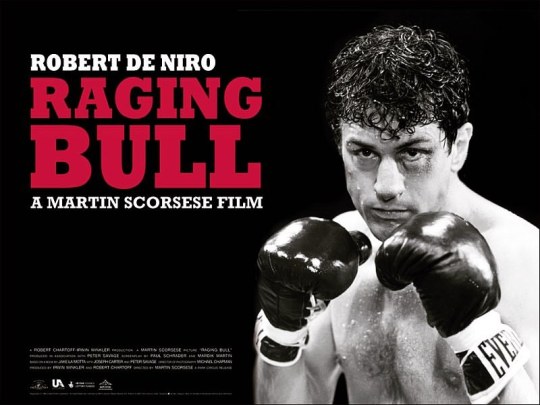
📺🎞 #LateNightCinema #classic Watching “Raging Bull”, a 1980 American biographical sports drama film directed by Martin Scorsese, produced by Robert Chartoff and Irwin Winkler and adapted by Paul Schrader and Mardik Martin from Jake LaMotta's memoir Raging Bull: My Story. The film, distributed by United Artists, stars Robert De Niro as Jake LaMotta, an Italian-American middleweight boxer whose self-destructive and obsessive rage, sexual jealousy, and animalistic appetite destroyed his relationship with his wife and family. Also featured in the film are Joe Pesci as Joey, LaMotta's well-intentioned brother and manager who tries to help Jake battle his inner demons, and Cathy Moriarty as his wife. Nicholas Colasanto, Theresa Saldana, and Frank Vincent all play supporting roles in the film. #film #movie #martinscorsese #robertdeniro #joepesci #boxing #ragingbull #filmclassic #cinemaclassic #jakelamotta (at Los Angeles, California) https://www.instagram.com/p/B-BspDipZw7/?igshid=1fvts01r090gd
#latenightcinema#classic#film#movie#martinscorsese#robertdeniro#joepesci#boxing#ragingbull#filmclassic#cinemaclassic#jakelamotta
0 notes
Text
In The Irishman, Joe Pesci bosses over De Niro - hollywood
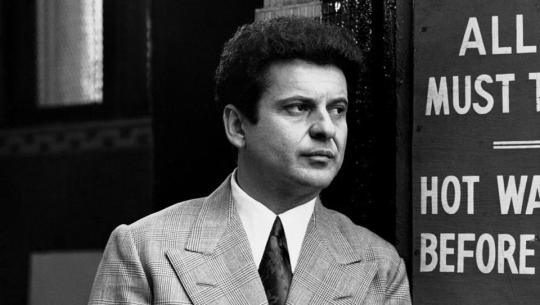
All through their acting lives, Robert De Niro has had better gigs, lines and dames than Joe Pesci. Especially in the films made by Martin Scorsese. So when Scorsese sent Pesci the script of The Irishman (released on Netflix recently) via De Niro who, according to the Hollywood grapevine, said, “Joe, you gotta”, he turned it down at least 40 times. Why he finally agreed to be Russell Bufalino is evident in the movie. For the first time, something else was being demanded of him.People like to see little Joe self-destruct and explode. His angry cinematic moments on YouTube have garnered a million views. Pesci, playing Tommy DeVito, brow-beats a fellow mobster (Ray Liotta in Goodfellas) in a restaurant…. Then there is the thrashing he gives actor Frank Vincent in the same movie, who in turn, thrashes him back in Casino…. Pesci’s slow-burn malignant buffoonery before he moves in for the kill, draws both chills and laughs. Always nasal, his high-pitched yap-yap is a signal that the plot will thicken and head towards a crisis. From that point onwards, it’s a cinch that a Joe Pesci film will leave someone dead; in many cases, Pesci included.
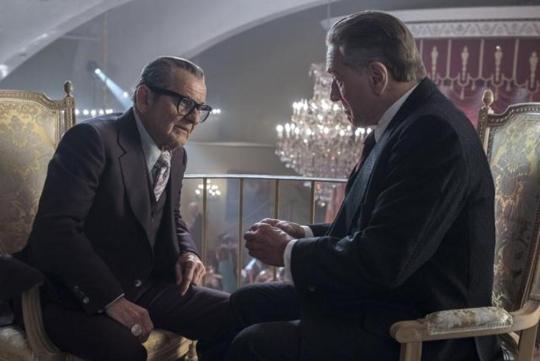
Role reversal: Mr Volatile, Joe Pesci (left), is Mr Gravitas in The Irishman. With Robert De Niro.
(
Photo: Netflix
)
But not this time. In The Irishman, the 76-year-old actor has a place at the high table of Philadelphia crime; he is Mister Gravitas gently nudging hitman Frank Sheeran, played by De Niro, to bump off inconvenient friends like trade union boss Jimmy Hoffa (Al Pacino) and foes. Here, De Niro waits for Pesci’s cues; in Pesci’s presence, he waits hat in hand. All roads, says Sheeran, lead back to boss Buffalino. Buffalino has Sheeran on a tight leash but keeps the pull gentle. There’s an exchange of sad and grim smiles on either side when Sheeran does a job on the side without letting the boss know or when Buffalino observes that Hoffa is getting “too emotional” and disturbing the status quo achieved between the union and the mafia. And towards the end of the film when Buffalino calls Sheeran “my kid” before handing him the Hoffa job, we know that a line has been crossed in cinematic history. This may or may not be Joe Pesci’s swan song but after The Irishman, he will no longer be seen as someone standing behind a De Niro. Or, an Al Pacino. As Pesci keeps saying in The Irishman, “It’s what it is.”
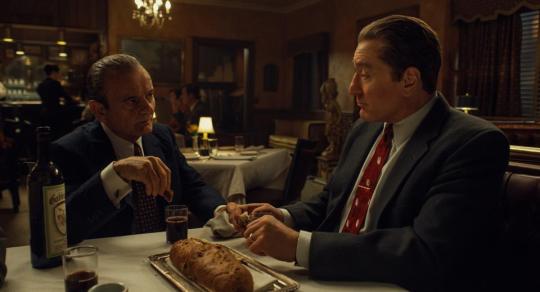
Dipping bread in wine, Russell Bufalino (Joe Pesci) gives instructions to Frank Sheeran (Robert De Niro).
(
Photo: Netflix
)
Joe Pesci’s best work was in the 1990s. The role of Russell Buffalino for which he came out of retirement is widely tipped to win an Oscar. Joey LaMotta: In Raging Bull (1980), Pesci plays boxing champ Jake LaMotta’s (De Niro) younger brother. He is the loyal and tough younger brother, the one person who can totally level with Jake but who is also his brother’s punching bag. Tommy DeVito: Pesci won the Best Supporting Actor playing the mobster with a hinge loose in Goodfellas (1991). DeVito is recalling past exploits with fellow gangsters at a restaurant when one of his listeners, says he’s funny. “Funny how?” asks Pesci quietly. The laughter at the table dies. Bernstein: Pesci plays Bernstein in The Public Eye (1992), based on the life of Weegee, the photographer of New York crime in the 1940s. “Pesci’s introspective, crablike performance gets under your skin,” said the Newsweek in praise.Vinny Gambini: In My Cousin Vinny (1992), Pesci plays the lead role for a change. Hot-tempered and witty, he plays a lawyer called in to defend his cousin in a murder case.Nicky Santoro: In Casino (1995), he plays the man with the money of an establishment run by his childhood friend Sam Ace Rothstein (De Niro). In the end, his greed and ambition get the better of him.
Read the full article
0 notes
Photo

• Based on Jake LaMotta’s 1970 autobiography “Raging Bull: My Story”, Scorsese’s Raging Bull skips over LaMotta’s childhood and goes straight to the boxing. He’s already married, already won a few boxing matches and has now set his sights on a new girl- the under aged Vickie (Cathy Moriarty). This is the movie’s biggest focus: LaMotta’s (Robert De Niro) insecure feelings toward the woman he loves. He’s already an angry young man, taking his anger on his boxing competitors. But it’s his jealousy of seeing Vickie with other men that really upset him. Just before his first encounter with Vickie down at the local community pool, LaMotta is having an argument with his then-wife over meat. It’s obvious that Jake is the one who’s unable to hold back his anger. That’s why it’s really sad to see Jake pursue Vickie, or any woman, for that matter. But she’s no push-over. Cathy plays Vickie as like-able, outgoing, comforting, but she’s a fighter too- resembling Ann Dvorak in Scarface (1932). Even fighting off Jake’s older brother, Joey (Joe Pesci) when he tries to take her away from a table full of men Jake despises. Joey is no less toxic than his brother- although he’d like you to believe he is. “Go over and apologize” he tells his brother when just a few scenes later, he scolds his own wife for “butting” into Jake’s relationship. And what does he do when he fails to take Vickie away from the men in the Copacabana? He slams a guy’s head with a car door. Yes, Scorsese men are toxic. Their unlikable. Unrelatable. Unfathomable. But that’s what Scorsese explores best. Our interest in such vile men. On a technical side, the cinematography is quite confusing- stressful at times. It is shot beautifully in black and white with an almost dreamlike essence. The opening sequence itself, with LaMotta gracefully taking jabs is a sight to behold. But there’s something strange about its use of close-ups in 90% of its run-time. Although it does give the movie that claustrophobic feeling. This movie is, after all, dialogue driven. So you don’t need to enjoy boxing or sports. It’s the movie that saved Scorsese and his career. A character study to rival any. https://www.instagram.com/p/B5sucirFe-j/?igshid=dxtb3s90dngc
1 note
·
View note